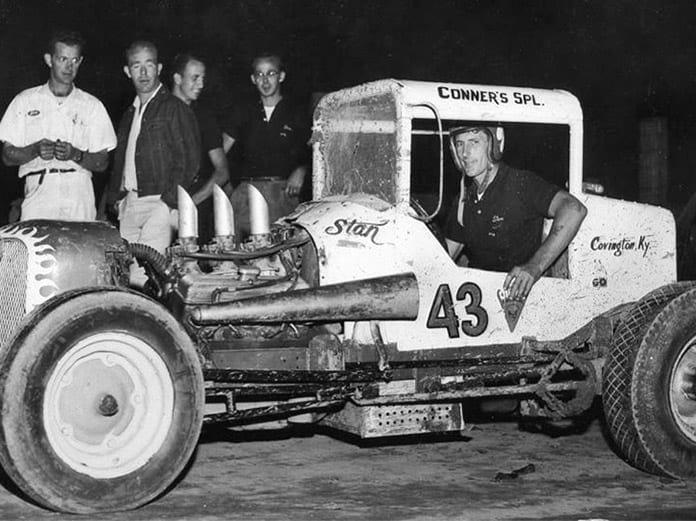During an era considered one of the sport’s most dangerous, there were drivers whose star flashed brightly across racing’s consciousness, only to be darkened as they seemed on the verge of greatness.
Stan Bowman was one.
During an extraordinary three months in 1962, against talents such as A.J. Foyt, Parnelli Jones and Jim Hurtubise, he astounded the elite USAC sprint car series, secured an Indianapolis ride and, then, was gone.
Born in southern Indiana, Bowman perfected his car handling skills racing his high school buddies on the curvy country roads that abound there. These makeshift races usually concluded as runoffs between Bowman and his best friend, Roy Robbins Jr.
Ultimately, it was Robbins who provided Bowman his first on-track experience. Robbins raced his own modified and Bowman begged incessantly to drive it. When Robbins finally conceded, Bowman ran his first organized race at Indiana’s Sportsdrome.
Captivated, Bowman soon had his own modified he barnstormed on the bullrings of southern Indiana, northern Kentucky and Ohio.
In 1955, after serving in the Army, Bowman moved to Covington, Ky., across the Ohio River from Cincinnati.
Fortuitously, Indiana’s Lawrenceburg Speedway was also nearby and Bowman exploited the opportunity. He won consistently. In 1958, he joined sprint car owner George Connor and in 1960 captured the track championship.
When USAC made its initial appearance at Lawrenceburg in 1961, Bowman ran under a temporary license. He took in another USAC show that year and impressed enough that USAC car owner Harold Beck signed him for the 1962 season.
While well prepared, Beck’s car was, at best, a middle-of-the-pack runner, powered by a 220 Offy. Their first race was at Ohio’s Eldora Speedway in April. It was the first USAC show at Earl Baltes’ showplace and it attracted USAC’s best.
When Beck asked Bowman how he wanted the car set up, he replied, “Set it up the way you think it’s best, I’ll just drive it.”
And drive it he did.

Starting fourth, Bowman leaped into the lead with Hurtubise chasing. “Herk,” in his Chevy, was the pre-race favorite and lap after lap he pursued Bowman.
As the race wound down, it started spitting rain. Anticipating a red flag, Hurtubise made a banzai move, pulled alongside Bowman but couldn’t pass. The red flag waved on lap 27 and Bowman was the winner.
Proving his Eldora performance wasn’t a fluke, Bowman crossed the line fourth at Salem (Ind.) Speedway and ran third at New Bremen (Ohio) Speedway. At IRP, he blew an engine but set a track record in his heat race. Back at New Bremen on June 3, he finished second behind Hurtubise with Jones and Foyt hounding him.
He was attracting a lot of attention.
“He was ready to progress to the top level,” insisted Mario Andretti to John Lucas for Lucas’ film, “The Legend of Stan Bowman.” “He was a future star no doubt about it.”
Famed chief mechanic Clint Brawner evidently thought so. Brawner invited Bowman to his Indianapolis Motor Speedway garage, signed him to drive for the Dean Van Lines team and fitted him to the car that Jimmy Bryan, Foyt and Sachs had driven before him.
Brawner later described Bowman as so excited that, “… he could scarcely speak a word.”
Hurtubise had also taken a liking to Bowman and hearing his first race for Dean would be at Pennsylvania’s Langhorne Speedway, Hurtubise told him, “You need some laps before then. Tell you what, be ready to warm my car up at Milwaukee if I’m running late.”
Conveniently, Hurtubise ran late and Bowman got many laps in John Zink’s Indy roadster.
Before his Langhorne debut, Bowman had a June 17 sprint car race in Terre Haute, Ind., and invited Brawner to watch.
Warming up Clyde Gutzwiller’s yellow Chevy, Bowman blasted down the frontstretch toward turn one. A spindle broke and the car cartwheeled violently end over end out of the track.
Bowman died five days later.
